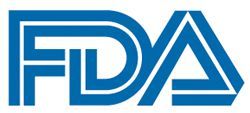Article
FDA Grants Priority Review to Elacestrant for ER+/HER2- Advanced or Metastatic Breast Cancer
Author(s):
The FDA has granted priority review to a new drug application seeking the approval of elacestrant for use in patients with estrogen receptor–positive/HER2-negative advanced or metastatic breast cancer.

The FDA has granted priority review to a new drug application (NDA) seeking the approval of elacestrant for use in patients with estrogen receptor (ER)–positive/HER2-negative advanced or metastatic breast cancer.1
The NDA is supported by findings from the phase 3 EMERALD trial (NCT03778931), in which treatment with the oral selective estrogen receptor degrader (n = 239) resulted in a 30% reduction in the risk of disease progression vs standard of care (SOC; n = 238) per blinded independent central review (BICR; HR, 0.70; 95% CI, 0.55-0.88; P = .0018).2 The median progression-free survival (PFS) with elacestrant was 2.8 months compared with 1.9 months with SOC.
Data from a landmark analysis revealed that the 12-month PFS rates achieved with elacestrant vs SOC were 22.3% (95% CI, 15.2%-29.4%) and 9.4% (95% CI, 4.0%-14.8%), respectively.
Moreover, among patients who harbored ESR1 mutations at baseline (n = 228), elacestrant (n = 115) reduced the risk of disease progression by 45% over SOC (n = 113; HR, 0.55; 95% CI, 0.39-0.77; P = .0005). Specifically, the median PFS in the elacestrant and SOC arms were 3.8 months and 1.9 months, respectively. The 12-month PFS rates in the investigative and control arms were 26.8% (95% CI, 16.2%-37.4%) and 8.2% (95% CI, 1.3%-15.1%), respectively.
Under the Prescription Drug User Fee Act, the regulatory agency is expected to decide on the application by February 17, 2023.
“The FDA’s acceptance of our NDA with priority review marks an important regulatory milestone for our company,” Elcin Barker Ergun, chief executive officer of the Menarini Group, stated in a press release. “We look forward to working with the FDA during its review of this submission, which addresses a new potential therapeutic option for a major unmet need in the management of patients with advanced or metastatic breast cancer after resistance builds in the earlier lines of treatment.”
To participate on the EMERALD trial, patients must have progressed or relapsed on, or following, 1 or 2 lines of endocrine therapy for advanced disease, and one of these lines of treatment must have been given in combination with a CDK4/6 inhibitor. Patients also needed to have received at least 1 line of chemotherapy for advanced disease, and an ECOG performance status of 0 or 1.
Participants (n = 477) were randomly assigned 1:1 to receive daily elacestrant at 400 mg or investigator’s choice of SOC treatment in the form of fulvestrant (Faslodex), anastrozole, letrozole, or exemestane. They were stratified by ESR1 mutational status (yes vs no), previous fulvestrant exposure (yes vs no), and presence of visceral metastases (yes vs no).
PFS in all patients and in those with ESR1-mutated tumors served as the co-primary end points of the trial. Secondary end points comprised overall survival (OS) in both populations, PFS and OS in those without ESR1mutations, investigator-assessed PFS, overall response rate, duration of response, clinical benefit rate, and safety.
Baseline characteristics were noted to be well balanced in the overall patient population. In the elacestrant and SOC arms, 29.3% and 31.5% of patients, respectively, received prior fulvestrant; 68.2% and 71 of patients, respectively, had visceral metastases.
Subgroup analyses showed that in the patients who did not previously receive chemotherapy in the metastatic setting (n = 371), the median PFS with elacestrant (n = 191) and SOC (n = 190) was 3.68 months (95% CI, 2.33-5.49) and 1.97 months (95% CI, 1.87-3.55), respectively (HR, 0.681; 95% CI, 0.520-0.891; P = .00388).3
In those with ESR1-mutated disease who did not receive prior chemotherapy (n = 170), the median PFS with elacestrant (n = 89) was 5.32 (95% CI, 3.65-9.03) vs 1.91 months (95% CI, 1.87-3.71) with SOC (n = 81; HR, 0.535; 95% CI, 0.356-0.799; P = .00235).
Elacestrant had a manageable toxicity profile that proved to be consistent with what has been reported with other endocrine therapies. Treatment-related adverse effects experienced by those who received elacestrant and did not receive prior chemotherapy included nausea (25.9%), fatigue (12.7%), and hot flush (11.1%). No treatment-related deaths occurred on either arm.
References
- Menarini Group’s elacestrant granted priority review by the US FDA for patients with ER+/HER2- advanced or metastatic breast cancer. News release. Menarini Industrie Farmaceutiche Riunite. August 11, 2022. Accessed August 11, 2022. https://prn.to/3bQQfD9
- Bidard F-C, Kaklamani VG, Neven P, et al. Elacestrant (oral selective estrogen receptor degrader) versus standard endocrine therapy for estrogen receptor-positive, human epidermal growth factor receptor 2-negative advanced breast cancer: results from the randomized phase III EMERALD trial. J Clin Oncol. Published online May 18, 2022. doi:10.1200/JCO.22.00338
- Kaklamani V, Bardia A, Aftimos P, et al. Subgroup analysis of patients with no prior chemotherapy in EMERALD: a phase 3 trial evaluating elacestrant, an oral selective estrogen receptor degrader (SERD), versus investigator’s choice of endocrine monotherapy for ER+/HER2- advanced/metastatic breast cancer (mBC). J Clin Oncol. 2022;40(suppl 16):1100. doi:10.1200/JCO.2022.40.16_suppl.1100









